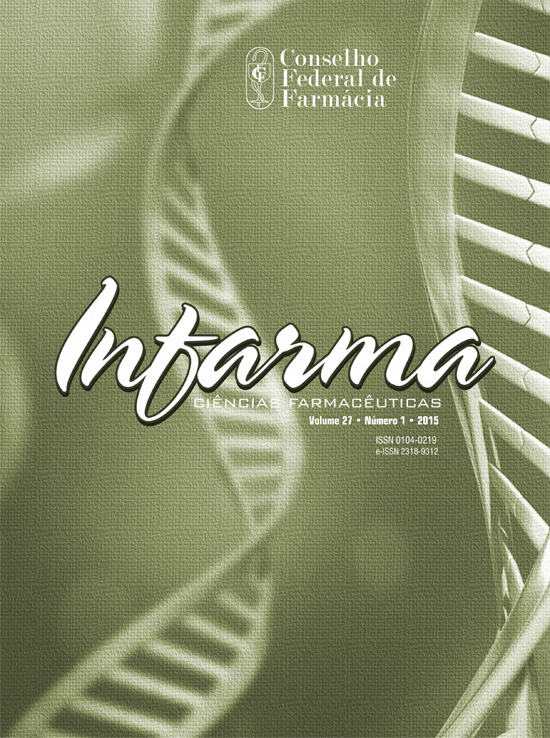QUALITATIVE AND QUANTITATIVE ANALYSIS OF FORMALDEHYDE IN SAMPLES OF PRODUCTS FOR HAIR STRAIGHTENING USED IN SALONS OF LINHARES, ES – BR
DOI:
https://doi.org/10.14450/2318-9312.v27.e1.a2015.pp22-27Keywords:
formaldehyde, hair straightening, toxicity, occupational hazardAbstract
Formaldehyde provides greater durability and effectiveness in hair straightening processes, and with these purposes, became commonly used irregularly. With Brazilian law, RDC n° 79, 2000 (Anvisa), the use of formaldehyde in cosmetics is allowed in maximum 0.2 % concentration, exclusively for conservation. Because it is a substance that can cause small irritation to carcinogenesis, the aim of this study was to check whether the main hair straighteners used in Linhares, ES – Brazil are meeting the specifications required by applicable law. Ten samples of different brands were collected and based on the Guide to Quality Control of Cosmetic Products of ANVISA realized qualitative analysis through identification with the Schiff reagent and dosing done by reaction with acetylacetone. Of the ten products tested, all showed formaldehyde and 80% had levels above permitted. These results indicate the need for strict and constant control of hair straighteners marketed and awareness strategies about the risks of use of formaldehyde.Downloads
Published
2015-03-30
How to Cite
de Oliveira Crippa, V., Freitas Teixeira, L. R., & Camizão Rebello, L. (2015). QUALITATIVE AND QUANTITATIVE ANALYSIS OF FORMALDEHYDE IN SAMPLES OF PRODUCTS FOR HAIR STRAIGHTENING USED IN SALONS OF LINHARES, ES – BR. Infarma - Pharmaceutical Sciences, 27(1), 22–27. https://doi.org/10.14450/2318-9312.v27.e1.a2015.pp22-27
Issue
Section
Original article
License
Authors who publish in this journal agree to the following terms:
- Authors retain the copyright and grant the journal the right of first publication, with the work simultaneously licensed under the Licença Creative Commons Attribution which allows the sharing of work with acknowledgment of authorship and initial publication in this journal.
- Authors are authorized to take additional contracts separately, for non-exclusive distribution of the version of the work published in this journal (e.g. publish in institutional repository or as a book chapter), with acknowledgment of authorship and initial publication in this journal.
- Authors are allowed and encouraged to publish and distribute their work online (e.g. in institutional repositories or on their personal page) at any point before or during the editorial process, as this can generate productive changes as well as increase the impact and Citation of published work (See O Efeito do Acesso Livre ).


